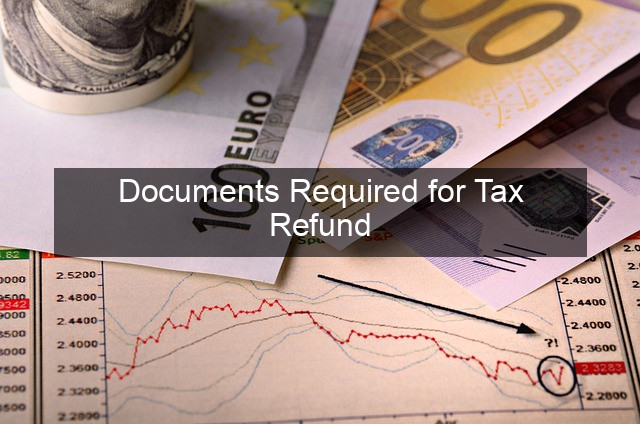Documents Required for Tax Refund
 ## Claim Your Cash: A Comprehensive Guide to Documents Required for a Tax Refund
## Claim Your Cash: A Comprehensive Guide to Documents Required for a Tax Refund
Filing your taxes can feel like navigating a maze, but the prospect of a refund at the end makes it worthwhile. To ensure a smooth and speedy refund process, gathering the correct documentation is crucial. This comprehensive guide will walk you through the essential documents required for a tax refund, helping you avoid delays and maximize your return.
### Understanding the Basics of Tax Refunds
Before diving into the specifics, let’s clarify what a tax refund actually is. A tax refund occurs when you’ve overpaid your taxes throughout the year. This can happen through payroll withholding, estimated tax payments, or refundable tax credits. The IRS then returns the excess amount you paid.
### Key Documents for Everyone
Regardless of your specific tax situation, certain documents are universally required for filing your taxes and claiming a refund. These include:
* **Social Security Number (SSN) or Individual Taxpayer Identification Number (ITIN):** You’ll need your SSN or ITIN, as well as those of your spouse and any dependents you’re claiming. This information is essential for identifying you to the IRS.
* **W-2 Form(s):** This form, provided by your employer, details your earnings and the taxes withheld from your paycheck throughout the year. Ensure you have a W-2 from each employer you worked for during the tax year.
* **1099 Forms:** If you’re self-employed, an independent contractor, or received income from sources other than an employer, you’ll likely receive 1099 forms. These forms report various types of income, including interest, dividends, and non-employee compensation. Common 1099 forms include 1099-NEC, 1099-INT, and 1099-DIV.
### Documents for Specific Deductions and Credits
Beyond the basic documents, claiming specific deductions and credits requires additional documentation. These can significantly impact your refund amount, so it’s crucial to have them organized and readily available.
#### Itemizing Deductions
If you’re itemizing deductions instead of taking the standard deduction, you’ll need documentation to support your claims. These may include:
* **Medical Expenses (Form 1040, Schedule A):** Keep records of medical bills, insurance statements, and other related expenses.
* **Charitable Contributions (Form 1040, Schedule A):** Retain receipts for cash and non-cash donations. For larger donations, you may need additional documentation from the charity.
* **State and Local Taxes (Form 1040, Schedule A):** Gather your property tax bills and state income tax returns.
* **Home Mortgage Interest (Form 1040, Schedule A):** You’ll need your Form 1098, Mortgage Interest Statement, from your lender.
#### Claiming Tax Credits
Tax credits directly reduce your tax liability, often leading to a larger refund. Here’s the documentation you might need for common credits:
* **Child Tax Credit (Form 1040, Schedule 8812):** You’ll need the SSN or ITIN for each qualifying child.
* **Earned Income Tax Credit (Form 1040, Schedule EIC):** You may need documentation related to your income and residency.
* **Education Credits (Form 8863):** Gather tuition statements, receipts for educational expenses, and Form 1098-T, Tuition Statement.
### Organizing Your Tax Documents
Keeping your tax documents organized is crucial for a smooth filing process. Consider using a dedicated folder, either physical or digital, to store all your relevant paperwork. This will make it easier to find everything when you’re ready to file.
### E-Filing vs. Paper Filing: Document Considerations
Whether you choose to e-file or file a paper return can impact your document handling. E-filing typically requires you to have digital copies of your documents, while paper filing requires physical copies.
### Common Mistakes to Avoid
* **Missing or Incorrect SSN/ITIN:** Double-check that all SSNs and ITINs are accurate.
* **Misplaced W-2s or 1099s:** Contact your employer or the payer if you haven’t received these forms.
* **Insufficient Documentation for Deductions and Credits:** Ensure you have the necessary receipts and statements to support your claims.
* **Failing to Keep Copies of Your Return:** Always keep a copy of your filed tax return and supporting documents for your records.
### Maximizing Your Refund: Tips and Tricks
* **Explore all eligible deductions and credits:** Research and understand which deductions and credits you qualify for to maximize your refund.
* **Keep accurate records throughout the year:** Don’t wait until tax season to start organizing your documents.
* **Consider using tax software or consulting a tax professional:** They can help you navigate the complexities of tax laws and ensure you’re claiming everything you’re entitled to.
### Conclusion
Gathering the correct documents for your tax refund can seem daunting, but with careful planning and organization, it can be a manageable process. By understanding the required documentation and following the tips outlined in this guide, you can streamline your tax filing experience and ensure you receive the maximum refund you deserve. Don’t leave money on the table – take the time to prepare and reap the rewards.




